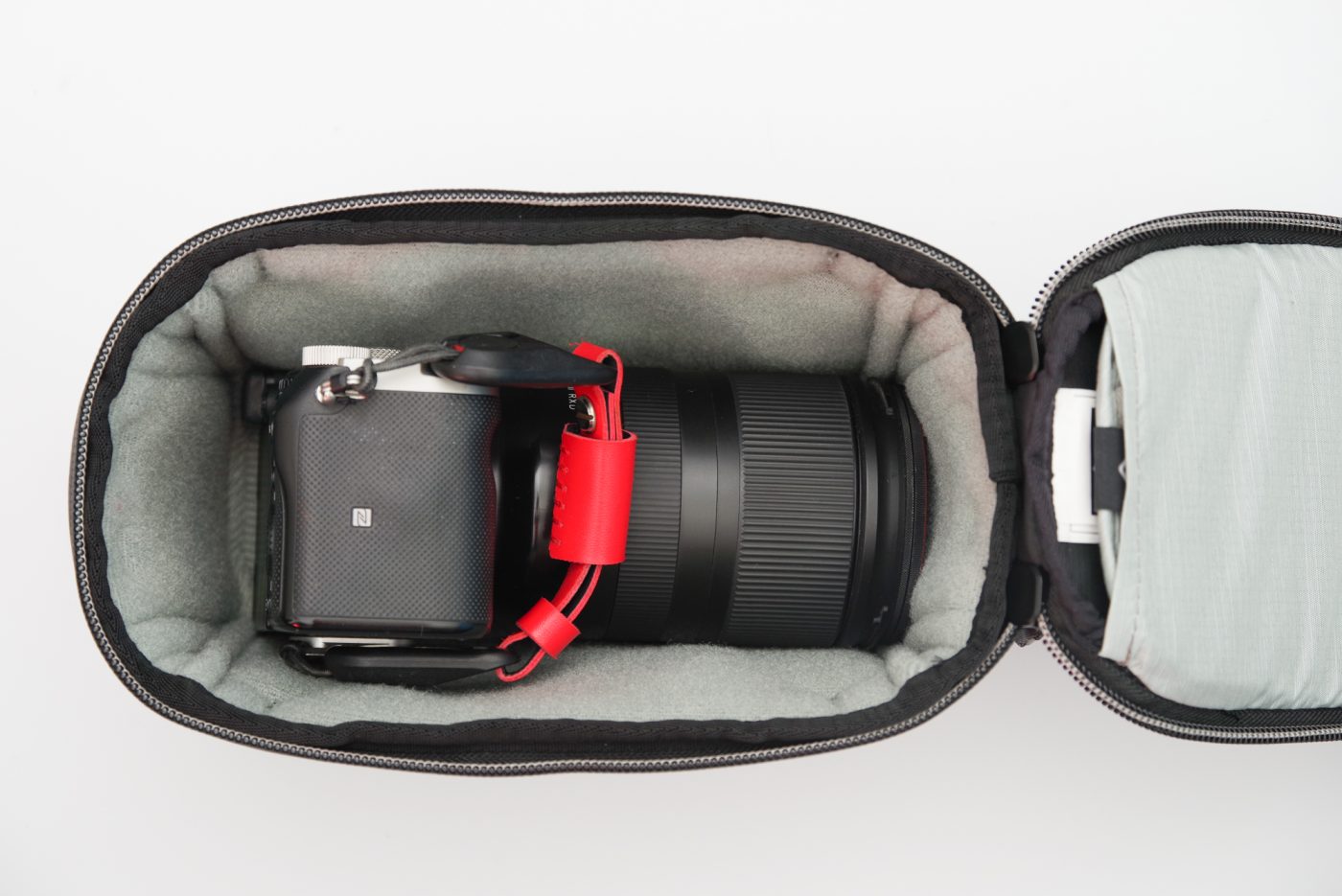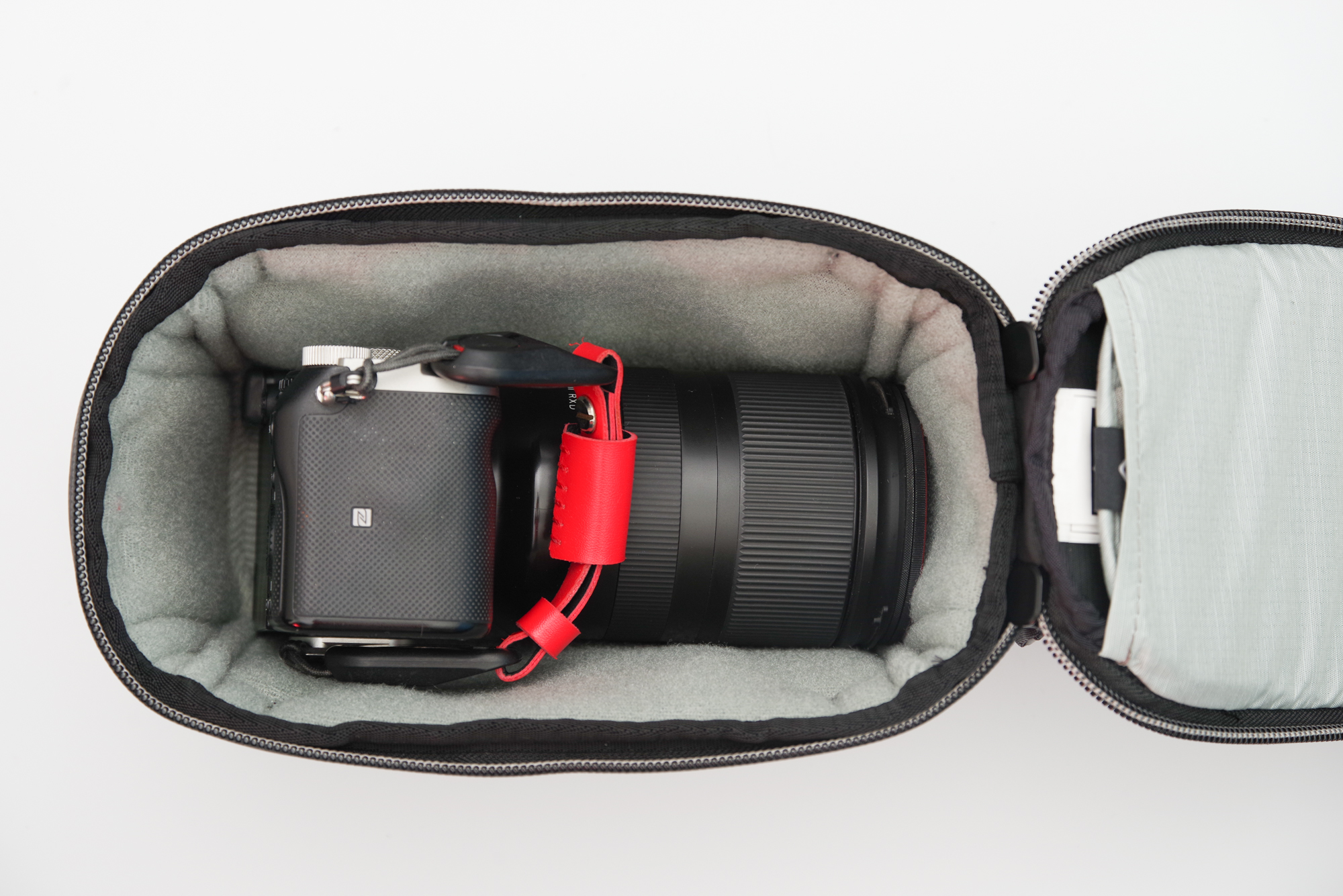Today we take a look at Peak Design’s new generation of Camera Cubes.
Not all camera accessories generate the same level of excitement. A flash, a nice bag or specialized filter is more captivating than a boxy camera cube. Nonetheless, camera cubes can be among the most useful and convenient accessories for a photographer on the go. Camera cubes can transform any backpack into a camera bag, improve protection in a suitcase or travel backpack / duffel, even help organize equipment at home.
I have been using Peak Design’s original camera cubes for some years, mainly in their Travel Backpack 35L and Travel Duffel 35L. I mostly enjoyed them, but I felt that some elements could be improved, especially in the “Small” cube.
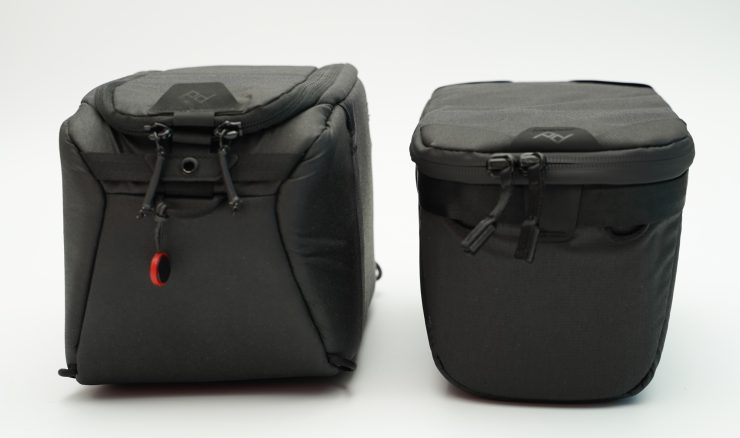
I was thus happy to see that Peak Design had released new versions of their cubes. Some design improvements are intended to make it easier to use the cubes, and two new formats have been added to the lineup. In addition to the Small, Medium and Large original sizes, the company added the Xsmall and the Smedium (a weird spelling indicating that this format sits between the small and medium). For simplicity, the following table highlights the volume of each format.
Peak Design standardized the volume of their camera cubes by referring to them as “packing units”. All Peak Design travels bags except their larger duffel accept 3 packing units, more or less tightly depending on the specific bag. The Small, Medium and Large cubes occupy 1, 2 and 3 units respectively. The Smedium takes up 1.5 (half the volume of a typical bag) and the Xsmall a little over half a unit. Note that Peak Design’s packing cubes also follow that rule, with small (1 unit) and medium (2 units) options.
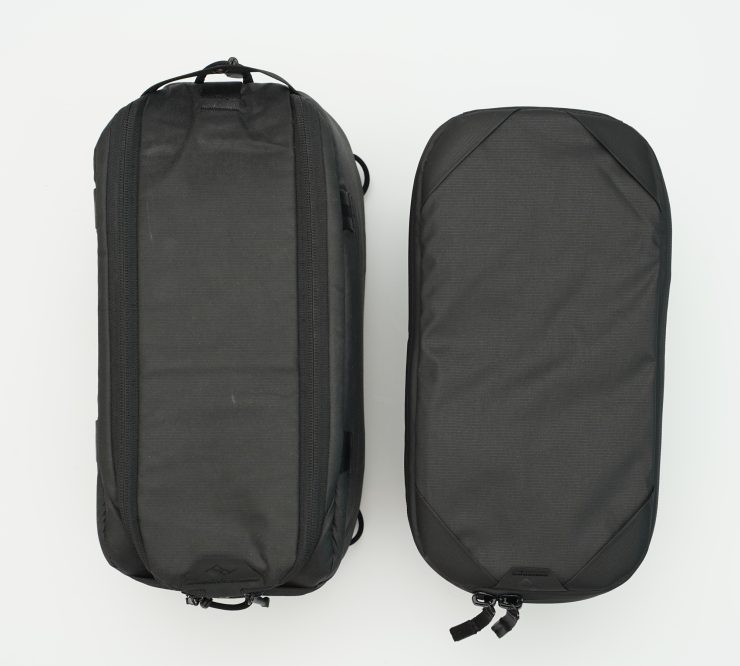
The new cubes are between 10% and 15% lighter than the previous version (depending on the size). Today I am looking at the Xsmall and Small versions.
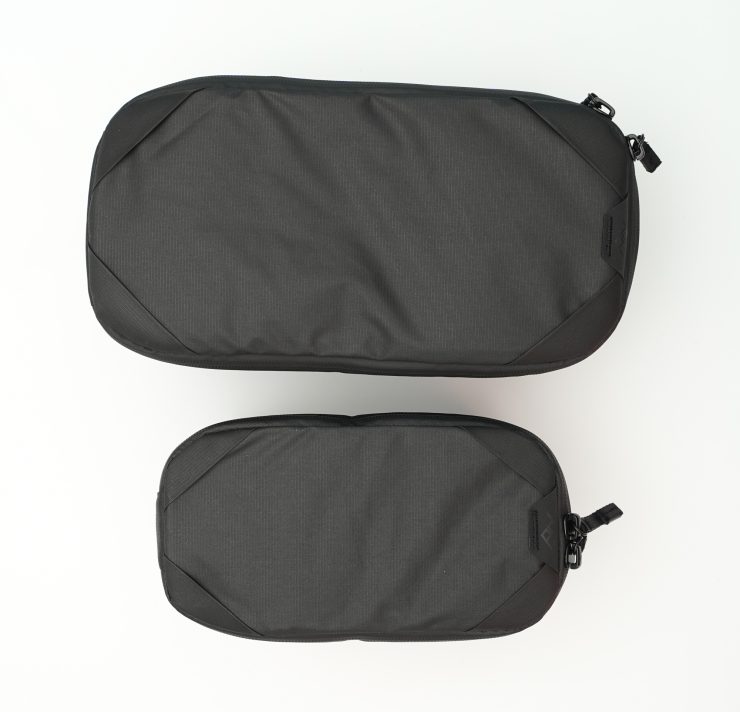
The exterior of the camera cubes V2 follow the same design cues, regardless of the size.
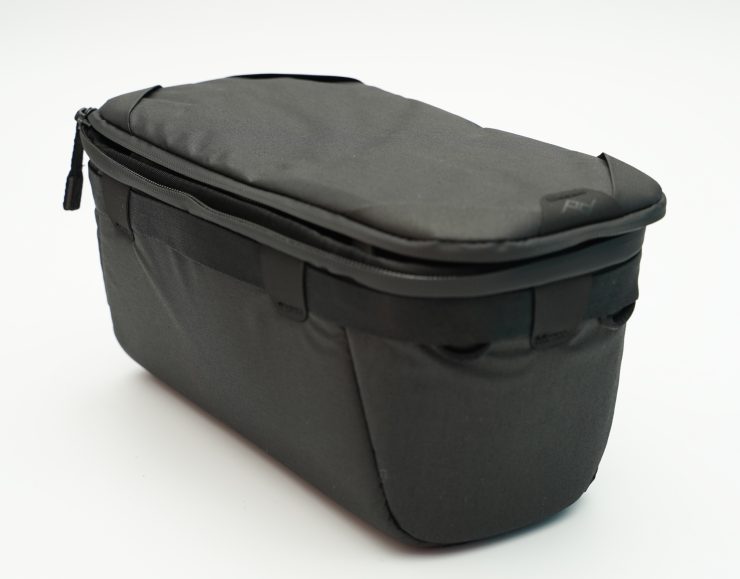
Instead of being a monolithic block with a few hoops, as on the V1, the V2 have a slightly tapered shape.
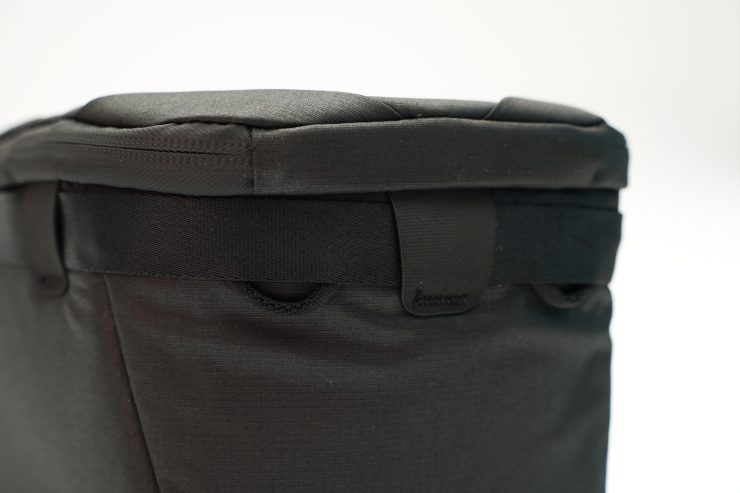
A webbing band goes around the whole periphery of the cube, and hoops are located at strategic points around it. These hoops and this band let the user attach one of the company’s camera straps (via Anchor Links), to turn the cubes into makeshift camera bags. The band also serves as a continuous handle.
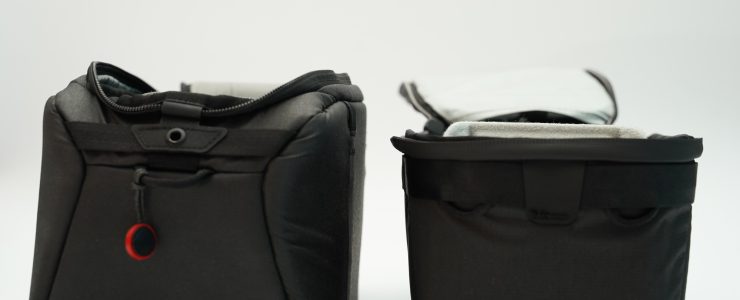
The zippers are positioned lower on the bag, creating a much larger opening.
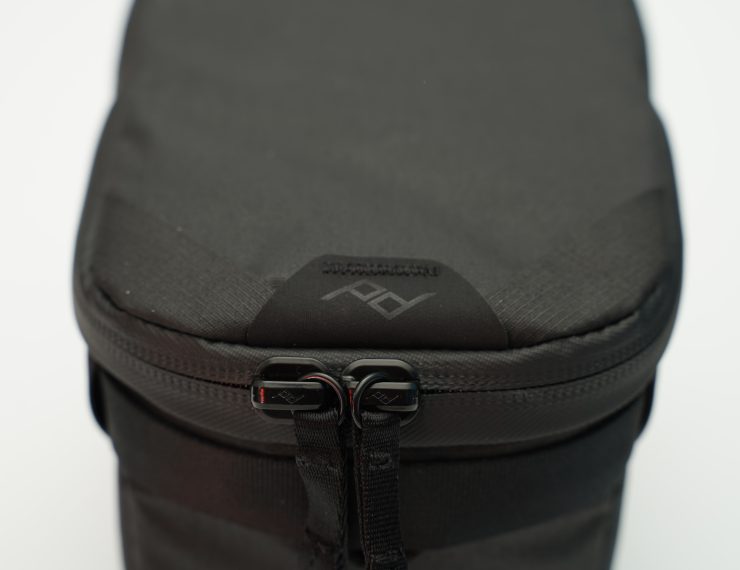
On the Xsmall and Small cubes, tabs on one end allow the user to simply tear the cover open in a single movement, as long as the zippers are centered.
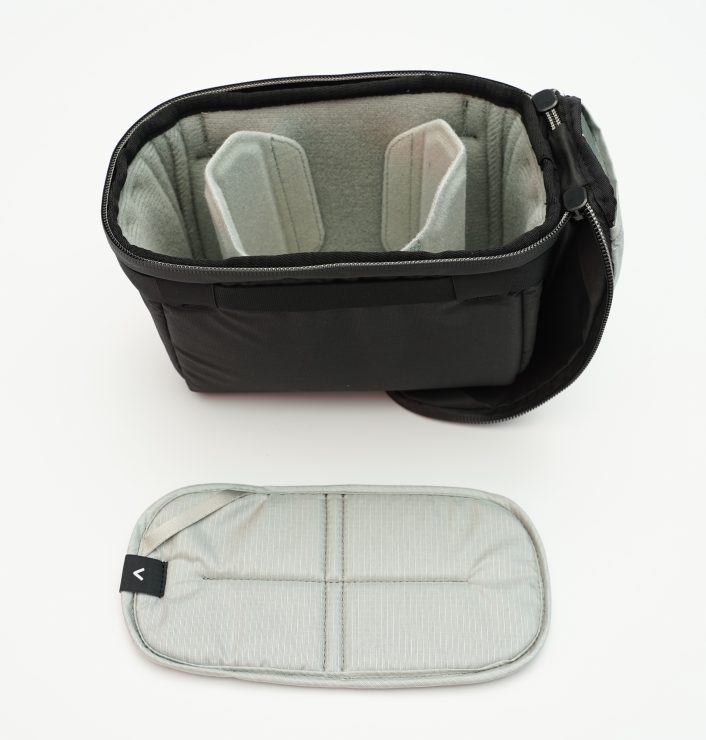
That cover can be folded around and under the cube when inserted in a bag, and the padding can also be removed to fold it more easily. Replacing the padding inside requires some fiddling, as is always the case with this type of padding.
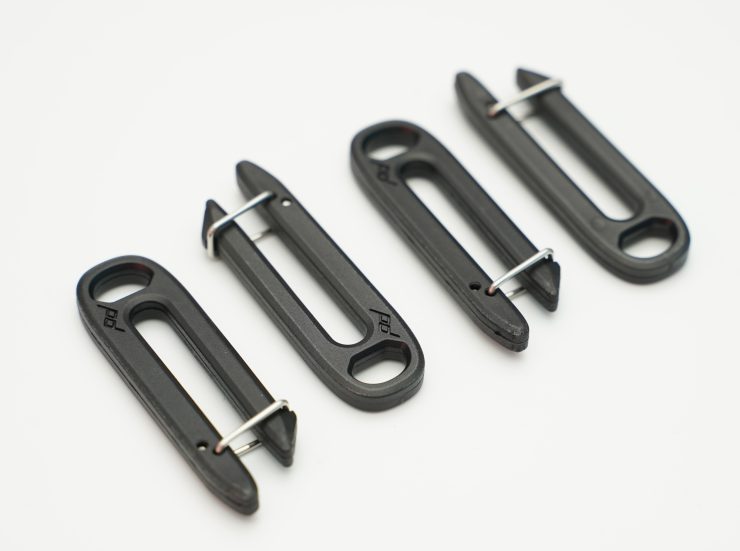
The cubes all come with attachment points for “C-clips” which let you attach the cubes to the inside of a travel bag. These are mostly intended for Peak Design bags, but other manufacturers might be able to use those attachment points also. Attaching the cubes prevents them from moving, of course, but the main usefulness of doing so is to place the cubes sideways inside a backpack that has a side access. This lets the photographer quickly grab the camera without having to fully open the backpack.
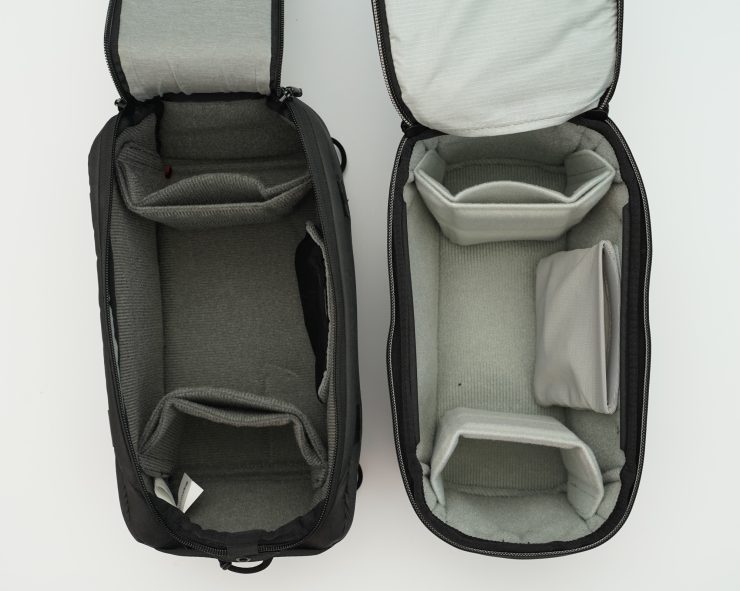
Inside, the new cubes use a lighter color than the V1, giving good contrast to easily locate your stuff.
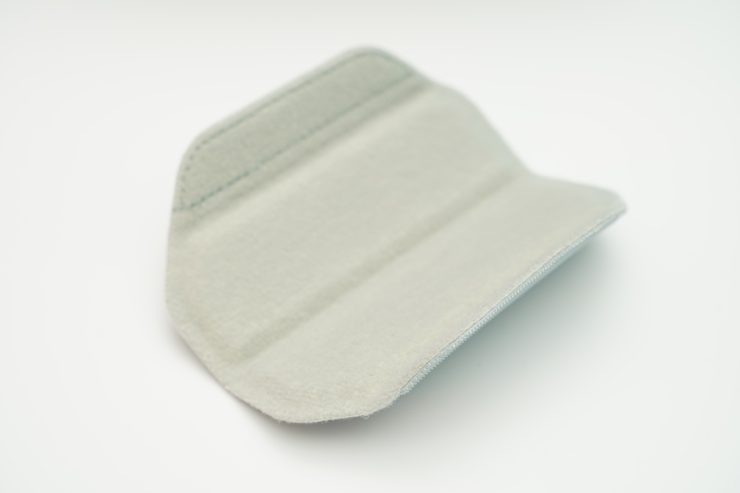
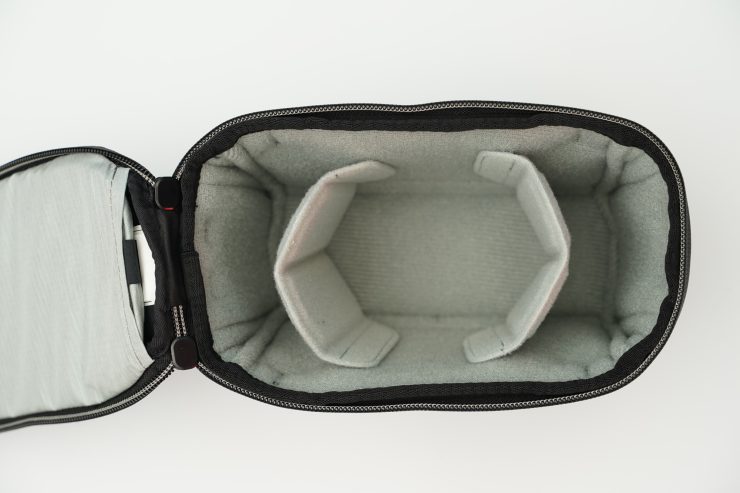
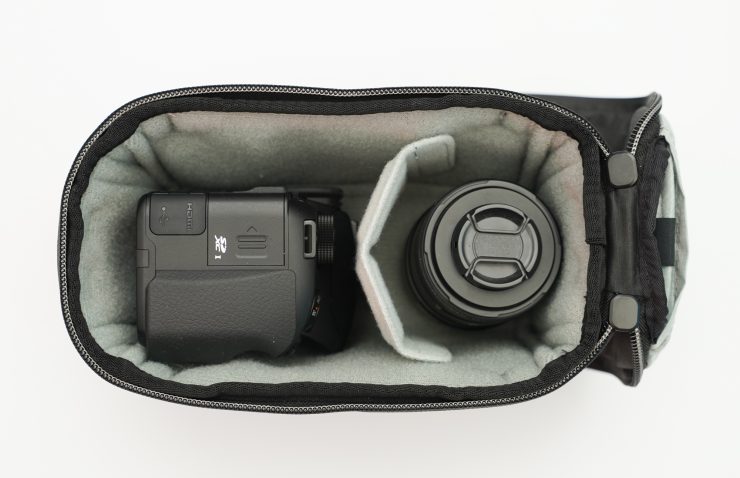
The Xsmall cube ships with two standard dividers with a fold in the center. They wrap nicely around lenses.
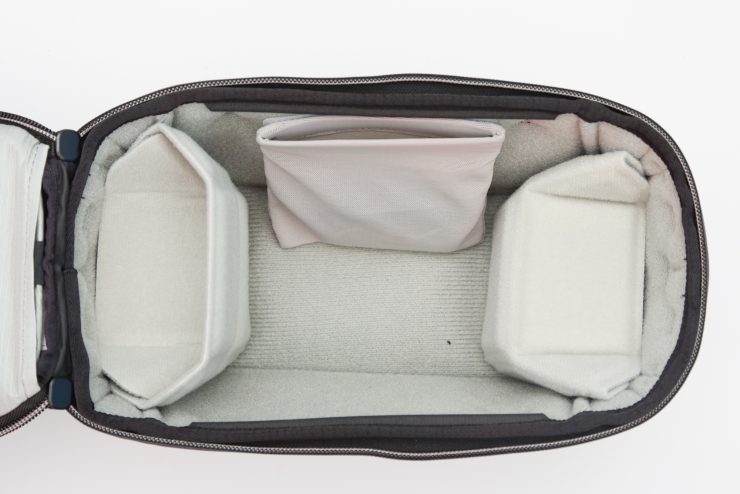
The Small cube ships with two Flexfold dividers. These are a hallmark of Peak Design. They bend halfway from the top, creating a closed cubby with a shelf overhead. Half or all of the top section can bend. This makes internal organization much easier than with regular, static dividers. Lenses tend to get tinier nowadays, so smaller compartments are welcome.
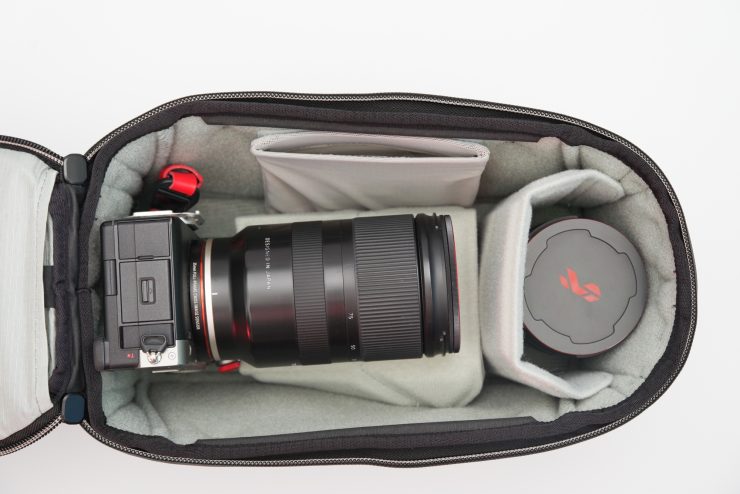
The possibilities offered by the Flexfold dividers are nearly limitless. I sometimes position then at the bottom (as seen on the picture above) to create a longer shelf for a bigger lens.
The Small cube also ships with a slim pocket attached via Velcro. It can be positioned anywhere, and is useful to store memory cards, batteries, filters or C-clips.
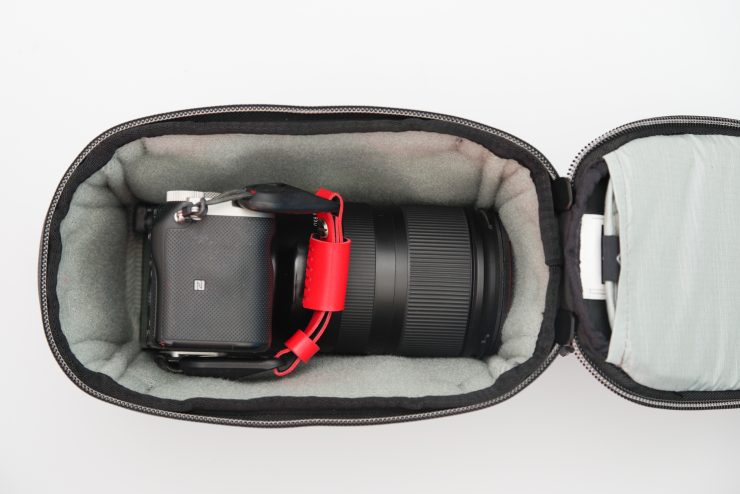
The Xsmall cube is ideal for a single body and lens. A full-frame DSLR won’t fit easily (except with a prime, possibly) but an APS-C DSLR or a mirrorless camera with a moderate-size lens will fit very well. An APS-C mirrorless body with 2-3 compact primes will be the maximum to reasonably expect to carry. The Xsmall cube is also a good choice to use together with a larger cube, the Xsmall being used for a few lenses, flashes or other accessories, and the larger cube for the camera itself. The Xsmall also frees up more space in a travel bag, allowing the photographer to carry more clothes or other essentials. The Xsmall cube also works well to carry a small drone and a few accessories.
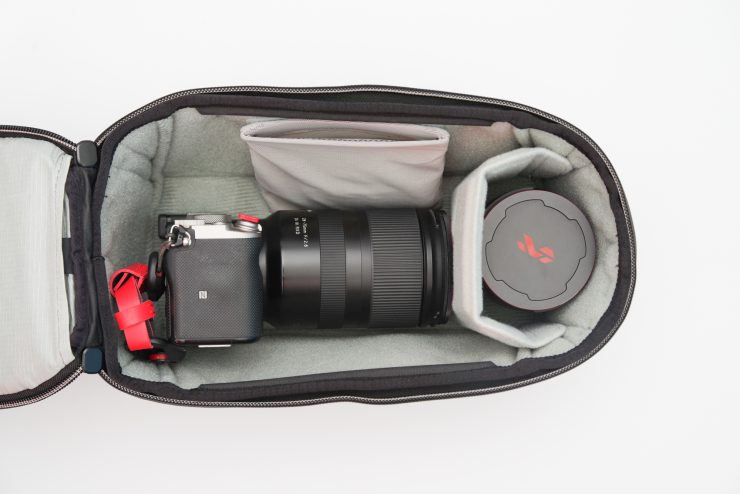
The Small cube is well suited for a camera and 2-3 medium-size lenses. Savvy organization will let you make the most out of it. The Flexfold dividers really make a difference to optimize internal space. The V2 Small cube looks smaller than the V1 from the outside, but that doesn’t really show inside (the V2 loses a little less than 1 liter to the V1). This again frees up a bit of space inside a travel bag and make the V2 cube better suited for Peak Design’s 30L Travel Backpack, which is slightly smaller all around than their 35L backpack and duffel. This slightly smaller format is well aligned with the current direction taken by the camera market, with compact bodies being at the forefront.
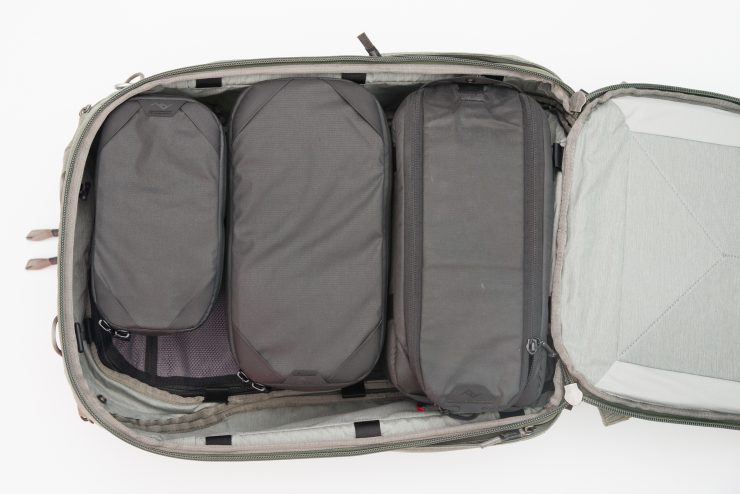
The camera cubes can be used in almost any carryon-sized suitcase, which also (typically) hold 3 packing units. Many travel bags from other manufacturers use a similar form factor and can also accept Peak Design’s camera cubes.
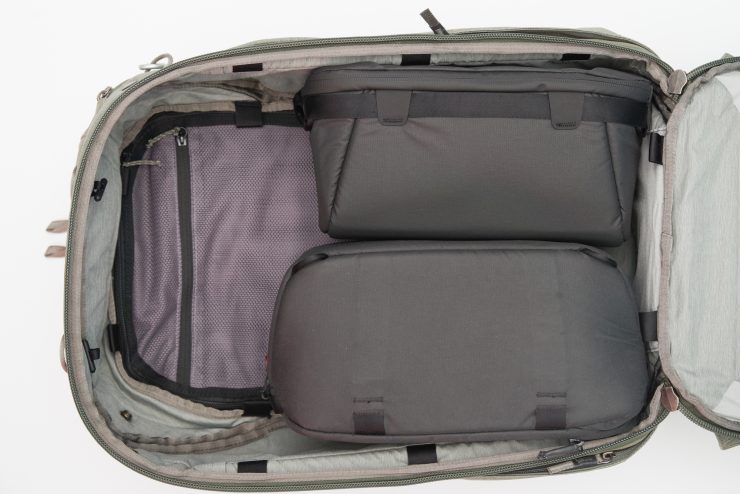
There is little to criticize about these camera cubes. One element is that the new cubes are not as tall as the V1. This again makes sense to fit better inside Peak Design’s 30L travel backpack, but it makes it more difficult to store larger camera bodies (which could be placed sideways in the V1). Also, while the top flap’s padding can be removed to tuck away the flap, on the original version creases at specific points made it easier to just fold the flap without having to remove its padding. These are minor things, really.
There are a few other manufacturers making high-quality camera cubes. Nomatic with Peter McKinnon come to mind. Their cubes are very well made, slightly cheaper, but their form factor make them harder to use in bags from other brands, and they do not have a top cover. Wandrd also make quality cubes, similarly priced to Peak Design’s. Again, they are less universal in their dimensions. There are many cheaper options available online, but as a rule you get what you pay for. Truly inexpensive options are likely to lack the build quality and lifetime warranty of the aforementioned brands.
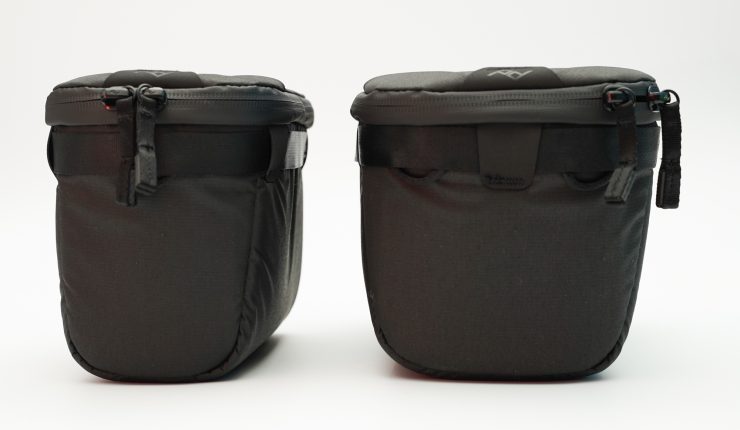
In summary, while camera cubes are not as exciting as a new piece of tech, in many ways they can be particularly useful on a day-to-day basis. Peak Design’s camera cubes V2 have many qualities and few flaws, and their versatility will make them useful for many on-the-go photographers. Peak Design products are available directly from the Peak Design Website, but also from B&H Photo, Adorama, and many other of our favorite camera shops.
NOTE: Links to Peak Design from Light & Matter are all affiliate links, and sales through them will support the author. However, all opinions stated are those of the author, with no influence or oversight from Peak Design. This is NOT a paid review, and Light & Matter authors never provide positive reviews in exchange for compensation.

